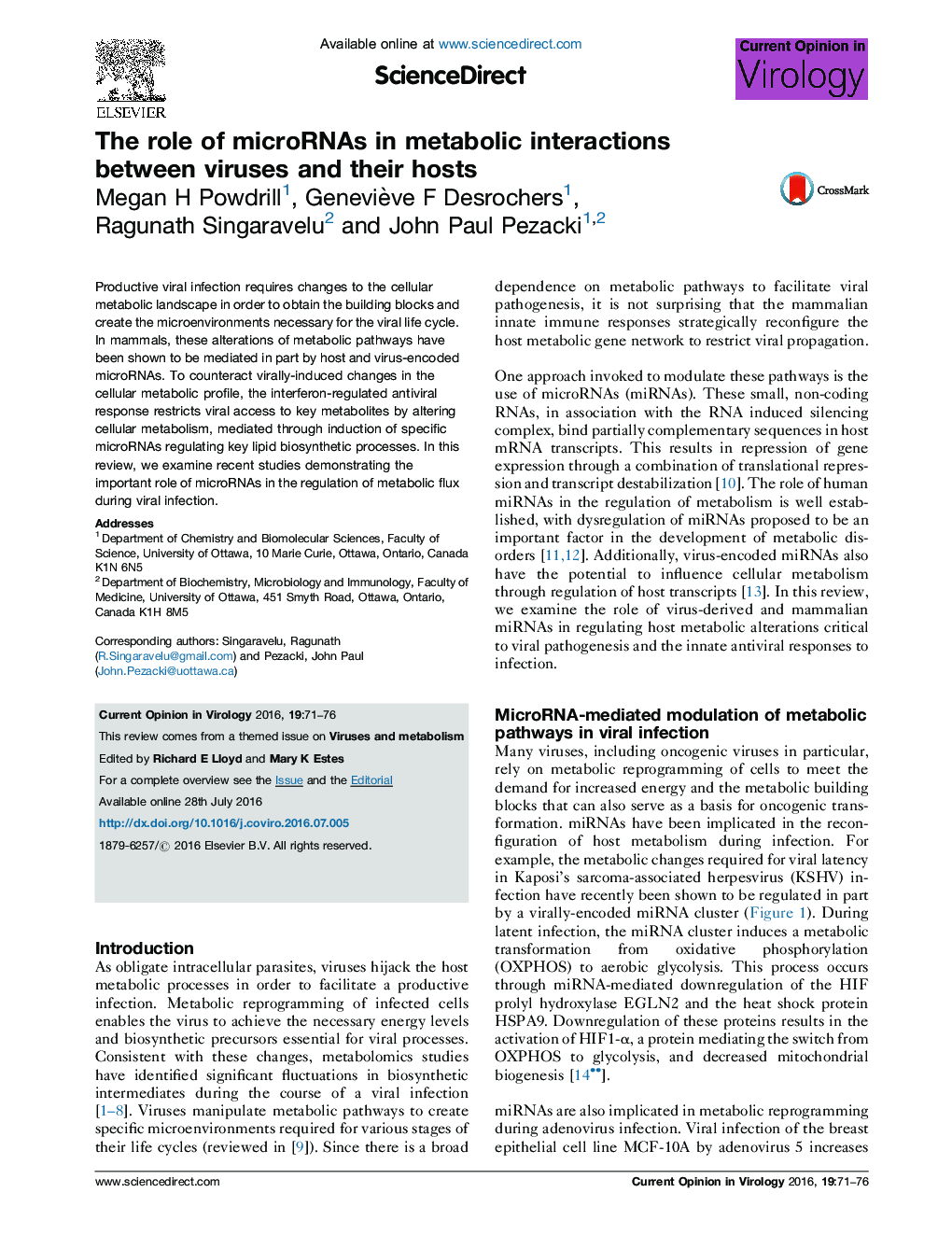| Article ID | Journal | Published Year | Pages | File Type |
|---|---|---|---|---|
| 2473184 | Current Opinion in Virology | 2016 | 6 Pages |
•Viruses use microRNAs to modulate metabolic pathways essential for infection.•Hijacking of lipid pathways is common due to the reliance of viruses on lipids.•MicroRNAs are involved in metabolic reprogramming during viral infection.•Interferon-induced microRNAs target host metabolism to counteract infection.
Productive viral infection requires changes to the cellular metabolic landscape in order to obtain the building blocks and create the microenvironments necessary for the viral life cycle. In mammals, these alterations of metabolic pathways have been shown to be mediated in part by host and virus-encoded microRNAs. To counteract virally-induced changes in the cellular metabolic profile, the interferon-regulated antiviral response restricts viral access to key metabolites by altering cellular metabolism, mediated through induction of specific microRNAs regulating key lipid biosynthetic processes. In this review, we examine recent studies demonstrating the important role of microRNAs in the regulation of metabolic flux during viral infection.
Graphical abstractFigure optionsDownload full-size imageDownload as PowerPoint slide
